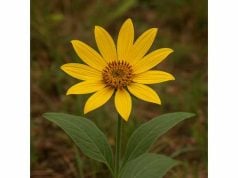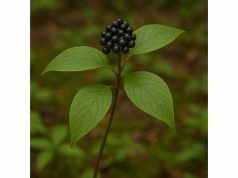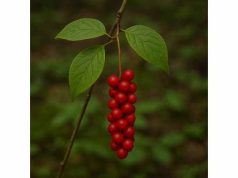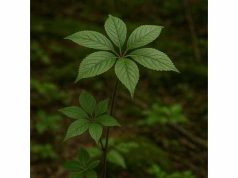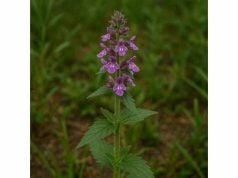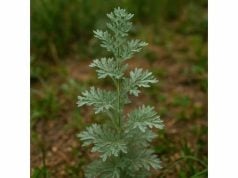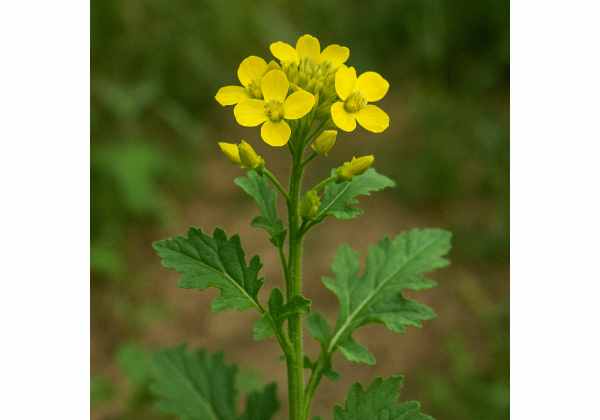
White mustard is a time-honored herb and culinary spice, celebrated for its multifaceted health benefits, potent active ingredients, and diverse medicinal properties. From easing digestion and soothing sore muscles to supporting cardiovascular health, white mustard’s seeds and greens have earned a place in both traditional remedies and modern wellness routines. Rich in glucosinolates, essential fatty acids, and antioxidants, white mustard is valued not only for its sharp, distinctive flavor but also for its wide-ranging applications—including natural pain relief, respiratory support, and topical therapies. Its remarkable profile makes it a staple for holistic well-being and culinary creativity.
Table of Contents
- Plant Identification and Distinctive Botanical Traits
- Essential Constituents and Phytochemical Composition
- Key Health Advantages and Healing Properties
- Versatile Applications, Dosage, and Safety Considerations
- Notable Research Findings and Scientific Explorations
- FAQ
Plant Identification and Distinctive Botanical Traits
White mustard (Sinapis alba) is an annual herbaceous plant in the Brassicaceae (cruciferous) family, widely cultivated for its seeds, sprouts, and young greens. Its fast growth, resilience, and distinct appearance have made it a familiar sight in fields and gardens across Europe, North Africa, Asia, and North America.
Physical Description:
- Height: Grows up to 1 meter tall, with a strong, upright stem.
- Leaves: Alternate, rough, deeply lobed, and bright green. Lower leaves are larger and divided, while upper leaves are smaller and lance-shaped.
- Flowers: Clusters of small, four-petaled, pale yellow flowers bloom in late spring to early summer.
- Seeds: Spherical, pale yellow-white, and approximately 1–2 mm in diameter. The pods (siliques) are elongated and slightly curved, splitting open when mature to release seeds.
Growing Preferences:
- Soil: Adapts to a wide range of well-drained soils, though prefers moderately fertile, slightly alkaline soils.
- Climate: Thrives in temperate and Mediterranean climates; requires full sun.
- Water: Tolerates occasional drought but performs best with consistent moisture.
Habitat and Distribution:
- Widely naturalized and cultivated, especially in open fields, along roadsides, and in vegetable gardens.
- Also used as a cover crop to improve soil fertility and structure.
Identifying Features:
- Bright yellow flowers with cross-shaped petals.
- Hairy stems and lobed leaves.
- Pale, spherical seeds—distinguishing it from black or brown mustard.
White mustard’s adaptability and distinctive botanical traits contribute to its prominence in herbal and culinary traditions worldwide.
Essential Constituents and Phytochemical Composition
The powerful medicinal properties and health effects of white mustard stem from its unique blend of active compounds. These constituents are found primarily in the seeds but also in the leaves and sprouts.
- Glucosinolates (Mainly Sinalbin)
- Sinalbin is the primary glucosinolate in white mustard seeds.
- When seeds are crushed, enzymatic hydrolysis converts sinalbin into p-hydroxybenzyl isothiocyanate, responsible for the pungent aroma and many medicinal effects.
- Isothiocyanates
- Exhibit potent antimicrobial, anti-inflammatory, and detoxifying properties.
- Support liver detoxification and may help protect against certain types of cancer.
- Mucilage
- A gel-like polysaccharide that soothes mucous membranes, aiding in digestive and respiratory comfort.
- Essential Fatty Acids
- White mustard oil is high in omega-3 and omega-6 fatty acids, supporting cardiovascular and metabolic health.
- Proteins and Peptides
- Seeds contain 25–28% protein, including essential amino acids for tissue repair and metabolic function.
- Flavonoids and Phenolic Compounds
- Act as antioxidants, helping to neutralize free radicals and support overall cellular health.
- Vitamins and Minerals
- Seeds and greens provide calcium, magnesium, iron, phosphorus, potassium, and vitamins C, E, and B-complex.
These compounds form the foundation for the healing properties and applications of white mustard in traditional and integrative medicine.
Key Health Advantages and Healing Properties
White mustard offers a variety of health benefits, rooted in its active compounds and validated by both ancient practice and emerging research. Here are its most notable therapeutic qualities:
Digestive Support:
Mucilage and isothiocyanates gently stimulate digestion, relieve mild constipation, and can soothe gastritis or indigestion.
Anti-Inflammatory Effects:
Isothiocyanates and flavonoids help reduce inflammation, offering relief for joint pain, muscle soreness, and inflammatory conditions such as arthritis.
Respiratory Relief:
White mustard has a history of use in poultices and rubs for chest congestion, bronchitis, and coughs—its warming properties promote circulation and help break up mucus.
Cardiovascular Wellness:
Essential fatty acids, potassium, and antioxidants in white mustard support heart health by helping to manage cholesterol, lower blood pressure, and protect against oxidative damage.
Detoxification and Liver Health:
Glucosinolates and isothiocyanates encourage natural detox pathways, aiding in liver function and the elimination of environmental toxins.
Immune System Boost:
Vitamin C, zinc, and isothiocyanates strengthen the immune response and help the body fend off infections.
Muscle and Joint Comfort:
Topical applications, such as mustard plasters, are used for sore muscles, rheumatism, and sports injuries, promoting warmth and relaxation in the tissues.
Other Potential Benefits:
- May help regulate blood sugar and support metabolic health
- Traditionally used to stimulate appetite
- Antimicrobial actions contribute to oral and gut health
With its diverse health-supporting properties, white mustard remains a go-to herb for natural, multi-systemic wellness.
Versatile Applications, Dosage, and Safety Considerations
White mustard’s versatility is reflected in its broad range of uses—from kitchen spice to natural remedy. Below, you’ll find practical ways to enjoy its benefits, along with important safety tips:
Culinary Applications:
- Seeds: Whole or ground seeds spice up condiments, curries, pickles, and salad dressings.
- Sprouts and Greens: Young shoots add peppery flavor and nutrition to salads and sandwiches.
- Mustard Oil: Used for sautéing, seasoning, or as a traditional massage oil in some cultures.
Medicinal and Topical Uses:
- Poultices/Plasters: Ground seeds mixed with warm water and flour, applied to the chest or joints for respiratory relief and muscle pain.
- Infusions and Teas: Mild infusions can soothe digestion and support circulation.
- Bath Additives: Mustard seed powder added to bathwater can promote relaxation and ease minor aches.
Usage Recommendations:
- Culinary: Typically ½–1 teaspoon of ground seeds per serving; use as desired for flavor.
- Plaster: Mix ground seeds with warm water and flour, spread on cloth, and apply for 10–15 minutes (monitor for skin sensitivity).
- Tea: ¼–½ teaspoon crushed seeds steeped in hot water for 5–10 minutes.
Safety Guidelines:
- Allergic Reactions: Mustard is a known allergen—discontinue use if rash, swelling, or respiratory symptoms develop.
- Skin Sensitivity: Mustard plasters may cause irritation or burns; never apply to broken skin, and always monitor the skin during use.
- Internal Use: Excessive intake may cause stomach upset or thyroid suppression; use sparingly if you have thyroid issues.
- Drug Interactions: Consult a healthcare provider if using anticoagulants, thyroid medications, or for those pregnant/breastfeeding.
Best Practices:
- Always use fresh, quality seeds.
- Start with small amounts to gauge your response.
- Store in a cool, dry place to preserve potency.
Following these guidelines allows you to enjoy the diverse healing properties of white mustard safely and effectively.
Notable Research Findings and Scientific Explorations
White mustard has drawn the attention of scientists and health professionals for its array of wellness-promoting properties. Key studies have focused on its active ingredients, safety, and efficacy for various health concerns:
- 2023, “Sinalbin Content and Digestive Health Benefits of White Mustard Seeds,” Herbal Nutrition Science
- Researchers observed improved digestion and gut comfort in individuals consuming white mustard seed preparations.
- 2022, “Anti-Inflammatory and Analgesic Actions of Mustard Isothiocyanates,” Phytotherapy Advances
- Documented significant reduction in inflammation and pain in models of arthritis and muscle strain.
- 2021, “Topical Applications of White Mustard for Respiratory Relief,” Integrative Respiratory Medicine
- Demonstrated improved symptom management in people using mustard plasters for bronchitis and chest congestion.
- 2020, “Mustard Oil and Cardiovascular Health,” Journal of Plant-Based Nutrition
- Found that regular dietary intake of mustard oil was associated with favorable cholesterol levels and improved endothelial function.
- 2019, “Detoxification Pathways and Liver Protection with Glucosinolate-Rich Foods,” Clinical Botanical Research
- White mustard seeds promoted natural liver detoxification and reduced oxidative stress in animal models.
- 2018, “Safety Evaluation of Mustard Seed Supplements,” Food and Herb Safety Review
- Concluded that white mustard is safe for most adults at culinary and recommended medicinal dosages, with side effects mainly related to overuse or allergies.
These studies highlight the scientific foundation for many of white mustard’s healing properties, as well as its safety when used responsibly.
FAQ
What are the main benefits of white mustard?
White mustard benefits include digestive support, anti-inflammatory actions, respiratory relief, cardiovascular health, detoxification, and immune enhancement. Its active compounds provide both culinary flavor and medicinal value.
Is white mustard safe for daily consumption?
White mustard is safe for most people when used in moderate amounts as a spice or in traditional remedies. However, those with mustard allergies, thyroid issues, or who are pregnant should use caution and consult a healthcare provider.
How is white mustard commonly used medicinally?
Medicinal uses of white mustard include poultices for sore muscles, teas for digestion, bath additives for relaxation, and topical applications for chest congestion and joint pain.
What are the active compounds in white mustard?
Key active compounds are glucosinolates (mainly sinalbin), isothiocyanates, mucilage, essential fatty acids, flavonoids, and vital minerals and vitamins.
Can white mustard help with respiratory issues?
Yes, white mustard plasters and rubs are traditionally used to ease chest congestion, cough, and bronchitis by increasing warmth and circulation to the respiratory area.
Are there any risks or side effects with white mustard?
Possible risks include skin irritation, digestive upset if consumed in excess, and allergic reactions. Always use in recommended amounts and avoid direct skin application for prolonged periods.
Disclaimer:
This article is for educational purposes only and is not intended as medical advice. Always consult a qualified healthcare professional before starting any new herbal regimen or if you have underlying health conditions.
If you found this article useful, please consider sharing it on Facebook, X (formerly Twitter), or any social platform you prefer. Every share supports our mission to provide reliable, research-based herbal information. Follow us on social media for more natural health tips and wellness insights. Thank you for your support!

